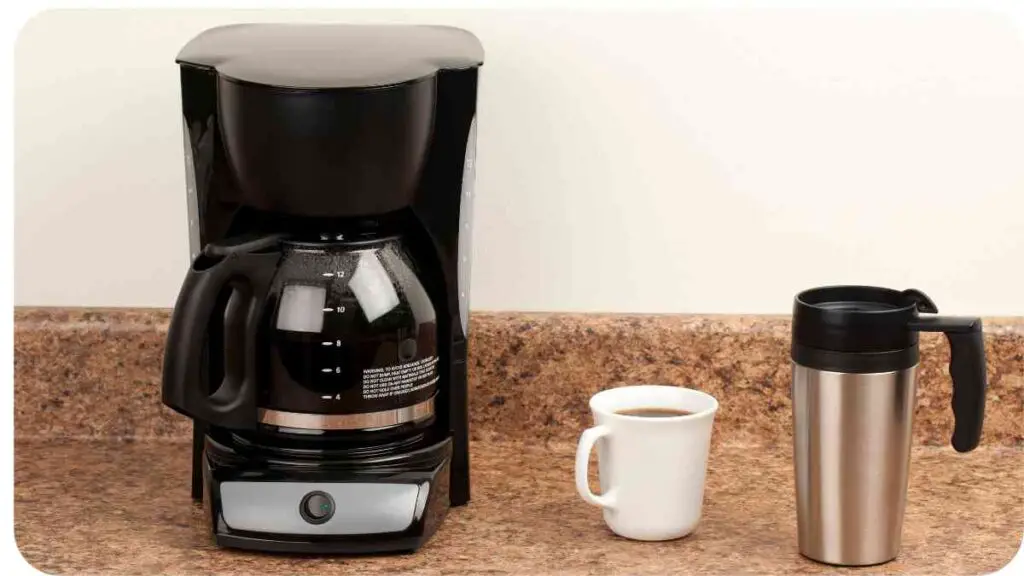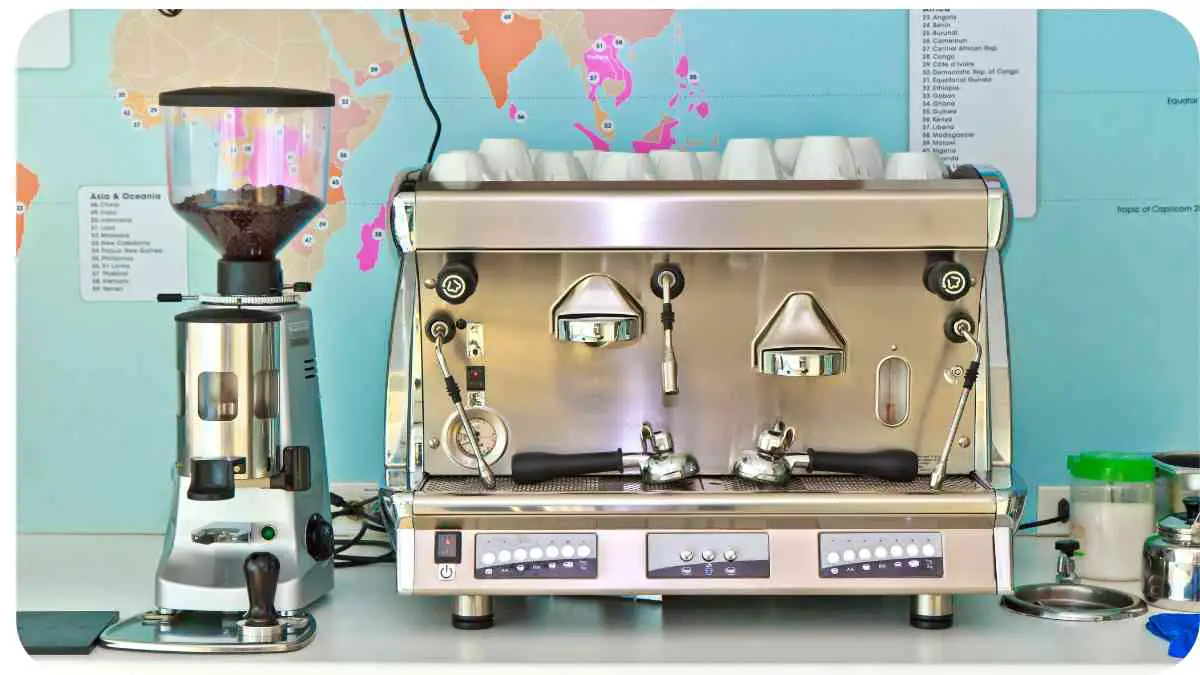There’s nothing quite like that morning cup of joe to jumpstart your day. And if you’re a proud owner of a Cuisinart coffee maker, you know that it’s more than just an appliance – it’s your daily dose of liquid motivation.
But to keep that java flowing smoothly and tasting its best, regular cleaning is paramount. In this guide, I’ll take you through each step of the cleaning process, sharing not only expert advice but also personal anecdotes to make the journey even more relatable.
| Key Takeaways |
| Regular cleaning maintains coffee quality and lifespan. |
| Gather tools like mild soap, vinegar, and a soft brush. |
| Preparing and disassembling the machine is the first step. |
| Cleaning removable parts and internal components is vital. |
| Descaling prevents mineral buildup for better performance. |
| Reassemble parts, brew a cycle, and enjoy clean coffee. |
| Troubleshoot common issues for a smooth coffee-making process. |
Why Cleaning Your Cuisinart Coffee Maker is Essential

Imagine this: you wake up, eager for your morning pick-me-up, only to be greeted by stale, bitter coffee. That’s not the experience you signed up for, right? Regular cleaning ensures that your coffee maker operates at its prime, preserving the flavors and aromas that make your brew so enticing. Plus, a clean coffee maker prevents the buildup of mineral deposits, which can affect the machine’s performance and lifespan.
“When it comes to coffee, sustainability is key. Learn more about sustainable coffee farming practices in our comprehensive guide. Read more“
Tools and Materials You’ll Need
Before we get our hands dirty, let’s gather our cleaning arsenal. Here’s what you’ll need:
- Mild dish soap
- White vinegar
- Soft brush or cloth
- Water
- Table: Tools and Materials
| Item | Purpose |
| Mild dish soap | Gentle cleaning of removable parts |
| White vinegar | Descaling and removing mineral buildup |
| Soft brush or cloth | Cleaning hard-to-reach areas |
| Water | Rinsing components after cleaning |
Step 1: Preparing Your Coffee Maker for Cleaning
It’s a good practice to start with a clean slate. Begin by unplugging your coffee maker and allowing it to cool. Once it’s safe to handle, remove any remaining coffee grounds and the used filter. Now, you’re ready to disassemble for a thorough clean.
“Explore the hidden realities of the coffee industry in our eye-opening article. Learn more“
Uncover the less glamorous side of the coffee industry and gain insights into its complexities.
Step 2: Cleaning the Removable Parts
Ah, the joy of taking things apart! Gently remove the carafe, water reservoir, and drip tray. These components are usually dishwasher-safe, but I prefer washing them by hand. A quick soak in warm, soapy water followed by a soft brush or cloth will do wonders.
Table: Recommended Cleaning Solutions for Different Parts
| Component | Cleaning Solution |
| Carafe and Reservoir | Mild soapy water and gentle scrub |
| Drip Tray | Warm water and dish soap |
Taking care of the little things goes a long way. Now that your removable parts are shining, let’s move on to the internal components.
Step 3: Cleaning the Internal Components
Here’s where the magic happens – the internal workings of your coffee maker. Remember, my friend, that coffee oils can accumulate over time, affecting the taste of your brew. Give your machine a fighting chance by cleaning it from the inside out. Start by referring to your machine’s manual for guidance on accessing the internal parts that require cleaning.
Table: Maintenance Schedule for Prolonged Coffee Maker Lifespan
| Component | Frequency |
| Internal Cleaning | Every 3 months |
| Carafe and Reservoir | Weekly |
| Descaling | Every 2-3 months |
Step 4: Descaling Your Coffee Maker

Time for some real talk. Over time, mineral deposits (a.k.a. scale) can build up inside your coffee maker, leading to reduced efficiency and potentially funky-tasting coffee. Enter descaling – the process of removing those pesky deposits.
“Did you know that decaf coffee has health benefits too? Find out more here. Read more“
Explore the surprising health advantages of decaffeinated coffee, making it a viable choice for coffee lovers.
Table: Top-rated Descaling Agents
| Brand | Key Features |
| De’Longhi | Eco-friendly and powerful |
| Urnex | Biodegradable solution |
Descaling can vary depending on your coffee maker model, so consult your manual for specifics. Generally, you’ll want to mix a solution of white vinegar and water, run it through your machine, and then rinse thoroughly.
Step 5: Reassembling and Final Tips for Sparkling Coffee
You’re almost there! Assemble the cleaned components back into your coffee maker, plug it in, and brew a cycle of plain water to rinse out any remaining cleaning solution. This ensures your next cup of coffee won’t taste like vinegar.
Remember, consistency is key. Stick to a cleaning schedule to keep your coffee maker humming and your coffee tasting exceptional. And speaking of exceptional, let’s troubleshoot some common issues you might encounter.
Troubleshooting Common Issues
- Issue: Coffee tastes weak. Solution: Adjust the coffee-to-water ratio for a bolder brew.
- Issue: Slow brewing. Solution: Clean the water reservoir and ensure it’s filled properly.
Table: Troubleshooting Guide
“Discover the best home coffee brewing methods tailored to your taste. Learn more“
Find the perfect home coffee brewing method that suits your preferences and brewing equipment.
| Issue | Solution |
| Weak Coffee | Adjust coffee-to-water ratio |
| Slow Brewing | Clean and fill the water reservoir properly |
Frequently Asked Questions
Q: How often should I clean my coffee maker? A: Aim for a deep clean every three months, and don’t forget to perform weekly maintenance.
Q: Can I use regular vinegar for descaling? A: Absolutely! White vinegar works wonders as a descaling agent.
Q: My coffee maker isn’t turning on. What do I do? A: Double-check the power source and ensure all components are properly in place.
Conclusion
In the world of coffee, cleanliness is akin to greatness. By following this step-by-step guide and integrating my personal experiences as a coffee enthusiast, you’re now armed with the knowledge to keep your Cuisinart coffee maker running smoothly. Remember, a little TLC goes a long way in ensuring your morning cup of joy remains as flavorful as ever. Happy brewing!
Further Reading
For more in-depth information on cleaning your Cuisinart coffee maker, check out these helpful resources:
- The Spruce – How to Clean a Cuisinart Coffee Maker: This comprehensive guide offers step-by-step instructions along with useful tips to ensure your coffee maker stays in top-notch condition.
Short Description: The Spruce provides detailed insights into maintaining your Cuisinart coffee maker’s cleanliness and performance. - Lifeboost Coffee – How to Clean a Cuisinart Coffee Maker: An Easy Step-by-Step Guide: Dive into this guide to discover a simple yet effective method for keeping your coffee maker spotless and your coffee tasting fantastic.
Short Description: Lifeboost Coffee presents a user-friendly approach to maintaining your Cuisinart coffee maker’s cleanliness for exceptional brews. - The Coffee Suite – Clean Your Cuisinart Coffee Maker: This guide breaks down the cleaning process into easy-to-follow steps, ensuring that your coffee maker remains a reliable companion.
Short Description: The Coffee Suite offers a guide that breaks down Cuisinart coffee maker cleaning into manageable steps for hassle-free maintenance.
FAQs
How often should I clean my Cuisinart coffee maker?
Regular cleaning is crucial for optimal performance. Aim for a deep clean every three months, and remember to perform weekly maintenance to keep your coffee maker in top shape.
Can I use regular vinegar for descaling?
Absolutely! White vinegar is a fantastic natural descaling agent that effectively removes mineral buildup and keeps your coffee maker running smoothly.
My coffee maker isn’t turning on. What do I do?
First, check the power source to ensure it’s connected. Additionally, make sure all components are properly assembled and in place, as some models have safety features that prevent operation if not correctly set up.
Why does my coffee taste bitter even after cleaning?
Bitterness can stem from various factors, including the coffee beans themselves, their grind size, or brewing time. Ensure you’re using fresh, quality beans and experiment with grind size and brew time to find your perfect cup.
Is it necessary to use a specific cleaning solution?
No, you can achieve effective cleaning with simple household items. Mild dish soap, white vinegar, and warm water are usually sufficient for maintaining your Cuisinart coffee maker’s cleanliness.

Hi, I’m Hellen James, founder of Unified Coffees. I created the platform to fill the gap in coffee blogging by providing tips on brewing coffee, rather than just focusing on beans and grinders.

